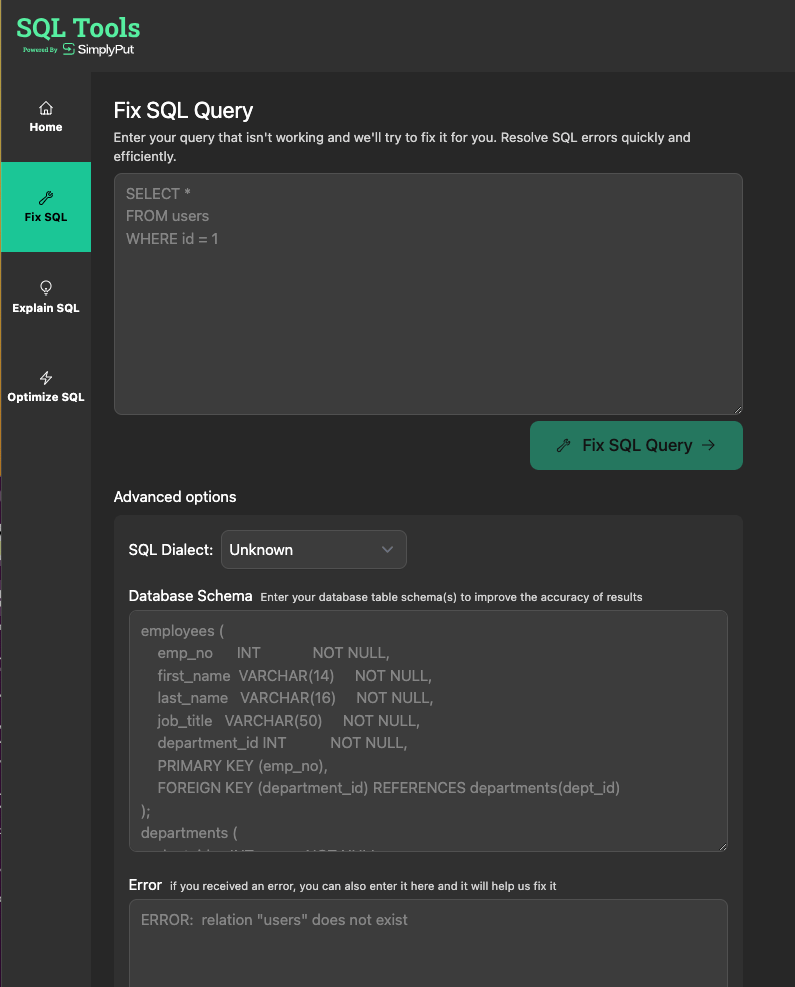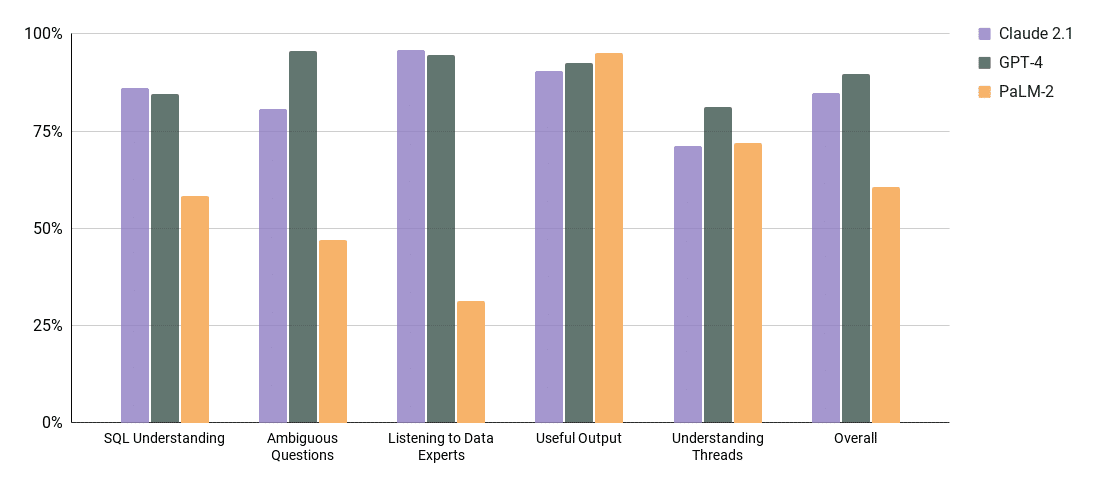
In the rapidly evolving world of data analytics and AI, the ability to convert natural language queries into SQL (Structured Query Language) statements using AI has become a game-changer. This technology, known as "text to SQL" or "natural language to SQL," empowers users to interact with databases using plain English, making data more accessible and actionable across various database dialects, such as Snowflake, BigQuery, AzureSQL, Redshift, Postgres, and others.
Understanding Text to SQL and Natural Language to SQL
Text to SQL and natural language to SQL are processes that allow users to ask questions or make requests in natural language, which the system then translates into SQL queries. Instead of writing complex SQL statements, users can simply ask questions like "What were the total sales for each product category last month?" or "Show me the top 10 customers by revenue." The AI-powered system interprets the intent behind the question and generates the appropriate SQL query to retrieve the desired information from the database.
The Role of AI in Text to SQL and Natural Language to SQL
The advancements in text to SQL and natural language to SQL technology are largely due to breakthroughs in artificial intelligence (AI) and natural language processing (NLP). Machine learning models, such as transformer-based architectures like BERT and GPT, have been trained on vast amounts of data to understand the nuances of human language. These models can comprehend the context and intent behind a user's question, even if it's phrased in different ways or contains ambiguities.
SimplyPut: Empowering Teams to Deliver Trusted Data Answers
While the advancements in AI have made text to SQL and natural language to SQL possible, implementing and leveraging this technology can still be challenging for many organizations. This is where SimplyPut comes in. SimplyPut is a platform that empowers data teams to harness the power of AI and make text to SQL and natural language to SQL accessible to their entire organization.
Here's how SimplyPut helps teams take advantage of text to SQL and natural language to SQL:
Easy Integration: SimplyPut seamlessly integrates with your existing databases, supporting a wide range of dialects like Snowflake, BigQuery, AzureSQL, Redshift, Postgres, and more. This means you can start using natural language queries without the need for complex setup or migration.
User-Friendly Interface: With SimplyPut, end-users can ask questions and interact with data using a simple, intuitive interface. The platform understands the context of the conversation, handles ambiguous questions, and presents results in a clear and meaningful way.
Guardrails for Question Asking: SimplyPut implements guardrails that guide users towards asking questions that the AI can reliably answer based on the dataset's scope and the data team's expertise. This helps prevent the AI from generating unfounded or speculative answers and educates users on formulating their questions effectively.
Intelligent Data Understanding: By automatically scanning connected datasets, SimplyPut allows the AI to grasp the nuances and idiosyncrasies unique to each dataset. During this process, the AI also generates detailed descriptions of tables and columns, which it can reference in future interactions. This deep understanding enables the AI to provide more nuanced and accurate responses, tailored to the specific characteristics of the data it interacts with.
Verified Questions and Expert Input: SimplyPut empowers data experts to input precise SQL queries, enabling the AI to understand and accurately answer similar questions in the future. This feature ensures that the AI's responses are grounded in the actual data structure and logic defined by the experts, significantly reducing the risk of inaccuracies and enhancing trust in the AI's capabilities.
Surfacing Insights: In addition to answering user queries, SimplyPut leverages AI to surface valuable insights such as trends and anomalies within the data. By proactively identifying and highlighting these patterns, SimplyPut enables users to gain a deeper understanding of their data and make more informed decisions.
To learn more about how SimplyPut enables companies and data teams to fully harness the power of AI, ensuring trust and accuracy in the insights derived from their data, check out our blog posts:
- Empowering Data Teams to Harness the Power of AI
- 5 Key Considerations for Implementing AI Data Assistants in Your Organization
For a more in-depth understanding of SimplyPut's features and capabilities, visit our documentation.
The Future of Data Interaction with Text to SQL and Natural Language to SQL
Text to SQL and natural language to SQL technology, powered by AI, is set to transform how we interact with data. By enabling users to ask questions in natural language and receive instant answers, organizations can democratize access to data and empower their teams to make data-driven decisions. SimplyPut is at the forefront of this revolution, providing a platform that makes text to SQL and natural language to SQL accessible, customizable, and user-friendly.
As AI continues to advance, we can expect even more sophisticated natural language interfaces for databases. The future of data interaction lies in seamless, intuitive conversations with our data, where the barriers between human language and machine language are effectively eliminated. With SimplyPut, organizations can embrace this future today and unlock the full potential of their data.
To learn more about how SimplyPut can help your organization harness the power of text to SQL and natural language to SQL, get started with a free trial today.


